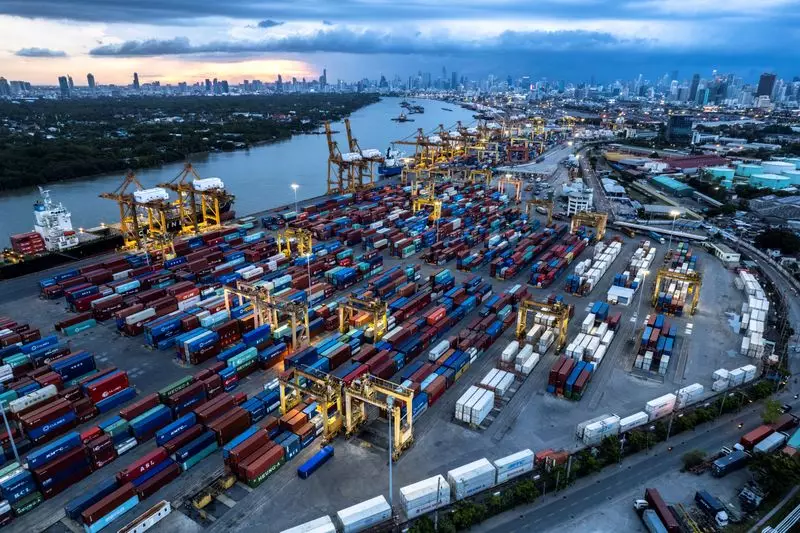In a significant turn of events for the Thai economy, the nation’s exports surged by 14.6% year-on-year in October, significantly outperforming analysts’ expectations of a mere 5.2% growth. This growth signals a robust recovery, particularly following a more modest increase of just 1.1% in September. As a critical element of Thailand’s economy, which is the second largest in Southeast Asia, this impressive turnaround indicates a potentially fruitful final quarter for the nation’s trade sector.
Several factors contribute to this upswing in exports. The Thai commerce ministry’s head of the Trade Policy and Strategy Office, Poonpong Naiyanapakorn, indicated that the country’s export performance could surpass the annual target of 2%, projecting a growth rate of around 4% by year-end. Key elements propelling this growth include an uptick in demand from crucial trading partners and a recovery within various industrial sectors. Moreover, favorable global monetary policies, an increase in exports of agricultural and food products during the holiday season, and reduced logistics costs have all played significant roles in bolstering trade performance.
While the current economic indicators appear positive, a cloud of uncertainty looms—particularly regarding potential tariffs and trade actions from the United States. The White House has expressed intentions to impose tariffs on several countries with whom it has trade deficits, and Thailand is among those on the list. However, Poonpong remains optimistic, asserting that Thailand is well-prepared and has the necessary frameworks in place to negotiate effectively should such measures be enacted. He emphasizes that any actions taken by the U.S. would affect multiple nations, not solely Thailand.
Expanding Reach: Trade Partnerships
In October, Thai exports to the United States, the country’s largest market, soared by an impressive 25.3%. This performance is complemented by a notable increase of 8.5% in exports to China and a 7% rise in shipments to Japan. This scenario demonstrates Thailand’s expanding influence in international markets, primarily driven by technology-related exports, which include computers and other advanced equipment. The increasing sophistication of Thai exports highlights the nation’s transition towards more value-added products, which could enhance its competitive edge globally.
Imports and Trade Balance Concerns
Despite the promising export figures, Thailand faces challenges on the import front, where a staggering 15.9% hike was recorded in October alone. This figure surpasses analysts’ predictions of a 6.5% increase, resulting in a concerning trade deficit of $0.79 billion for the month. Such deficits can pose questions about overall economic health and sustainability. As the country navigates the complex interplay between exports and imports, it will be crucial for policymakers to devise strategies to maintain healthy trade balances while fostering growth in key sectors.
Thailand’s export sector is ascending rapidly, indicating resilience and potential for the final quarter of 2024. However, vigilance and adaptability will be essential in the face of global trade shifts and potential protective measures from major trading partners like the U.S. Moving forward, maintaining a balance between fostering growth and controlling imports will be critical for sustaining economic momentum in Thailand.

